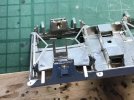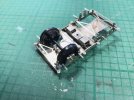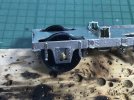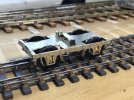I wouldn’t call it “bad engineering practice”. It’s only bad if it doesn’t get the result that you’re trying to achieve.
Pre-loading is achieved by pre-compressing a spring. This means that it won’t compress more, until a load exceeding the preload is applied. That might be a good thing in some applications, but, I doubt it’s what you’d want on a model, unless you’re using the preload to set a ride height, and you’re not too bothered about the smoothness of the ride.
(I‘ve never heard any of my passengers complain, but then at my age & mileage, high frequency hearing ain’t a strong suit).
I‘ve never “designed” springs for models, I’ve always tried the springs I could find in my bits boxes that fitted, and changed them about to see what worked best.
But if I were designing something, I guess I’d try to arrange the spring stiffness to be enough to keep them compressed a bit when you lift it off the track and the axleboxes go to the full droop position, and about twice the vehicle weight at the axlebox fully up position (ie suspension fully compressed), and with a bit of luck, they’d sit, static, at about half travel. Getting springs of this rate, which would be one eighth of the coach weight plus say 10%, divided by the travel (1-2mm?), might be a challenge, but sounds like a target.
Adjusting the ride height, having got the right spring rate (rate=stiffness units are N/mm or lbsf/inch), might involve some shimming, and a great deal of faffing about. Probably even more faffing in smaller scales. Or you can simply use what fits and try it. Add weight, or stretch the springs a bit.
But don’t cut coils off. That makes the spring shorter, but stiffer.
Thinner wire or bigger diameter or more coils = softer (lower rate)
the opposite is obviously true!
atb
Simon
 www.clag.org.uk
www.clag.org.uk







